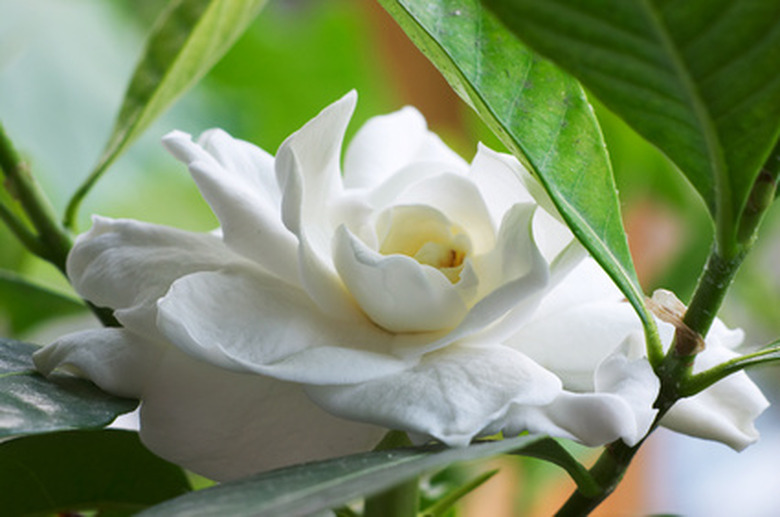Homemade Fertilizer For Gardenia Plants
We may receive a commission on purchases made from links.
You don't have to be a master gardener to make a homemade fertilizer for gardenia plants (Gardenia jasminoides, U.S. Department of Agriculture plant hardiness zones 7 through 11), and you probably already have most of the supplies. Although gardenias can be a garden's problem child and are heavy feeders, they are long-time staples in Southern gardens.
When gardenias burst into bloom with their sweetly scented, waxy flowers, all the extra fuss will have been worth the effort. Mixing up a DIY homemade fertilizer is relatively basic and is an organic option to feeding your gardenias.
Gardenia Growth Requirements
Gardenia Growth Requirements
The gardenia is a heat-loving, semi-tropical evergreen. As such, it needs sun, warmth and constant moisture to flourish. In addition to these climatic conditions, the gardenia is a heavy feeder that thrives in well-drained acidic soils with a pH of 5.5 to 6.5. It doesn't perform well in alkaline soils. Monthly feeding with an acid-based, all-purpose fertilizer will encourage flower production and help keep the gardenia healthy.
Fertilizing With Coffee Grounds
Fertilizing With Coffee Grounds
Although commercial fertilizers are readily available, kitchen scraps are easily transformed into plant food for a fraction of the cost. Old coffee grounds are one of the best fertilizers for gardenias; spread them around the base of the plant. In addition to being an excellent source of nitrogen, the acid in some coffee grounds may help to lower the pH of the surrounding soil temporarily, stimulating the roots of acid-loving plants such as the gardenia.
Using Compost Tea
Using Compost Tea
Supplement weekly applications of coffee grounds with monthly fertilizer "tea" treatments. Put 1 cup of rotted manure or aged compost into a cloth bag. Seal the bag and submerge it in 1 gallon of water. Let it sit for three days; then remove the nutrient bag and apply the tea directly to the soil.
When to Apply
When to Apply
Begin feeding gardenias in mid-March; this is when they are coming out of their sluggish winter phase and preparing to bloom. Reapply fertilizer once every four weeks until the end of summer, when it is time to prepare gardenias for the arrival of chilly weather.
Preparing Gardenias for Winter
Preparing Gardenias for Winter
To help heat-loving gardenias survive in cooler conditions, surround the plants with a 3-inch layer of organic mulch, pulling the mulch away from the stems. For plants in highly visible areas, choose an attractive mulch, such as miniature bark chips or cocoa hulls. A generous layer of mulch insulates sensitive roots and protects them from the effects of wintry weather. Additionally, organic mulches slowly decompose, providing plants with an ongoing source of nutrients for the duration of the winter.
Signs of Nutrient Deficiencies
Signs of Nutrient Deficiencies
While a broad-spectrum plant fertilizer, such as compost tea, generally supplies a plant with all it needs to maintain healthy growth, a gardenia tree occasionally may require an infusion of a specific nutrient. Most common nutrient deficiencies produce symptoms that are easy to see. Yellow foliage with yellow veins on green leaves indicates a nitrogen deficit. Yellow, curled leaves with green veins is a sign of iron deficiency.
To remedy these situations, apply a 4-inch layer of compost to the surrounding soil in the spring. As it breaks down, compost will add essential nutrients to the soil. For a faster fix, rake 1 pound of blood or bone meal into the surface of the soil; this is an excellent source of both iron and nitrogen. To eliminate the guesswork, always perform a soil test to determine any nutrient deficiencies or excesses before fertilizing your gardenia.
